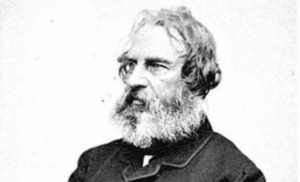Pastor, are you sure you know where your missions support goes? If you took a close look, would you like what you find? I suspect there’s a good chance you wouldn’t.
So let’s make it interesting. Take out a sheet of paper. Here are a few questions—and no peeking at your church budget.
- How much of your budget do you realistically intend to commit to missions? I’m not asking how much you give now. I’m asking: what’s your goal?
- How much of your missions giving focuses on your congregation (visiting missionaries, short-term trip assistance, etc.)?
- How much stays in your city (your local association or network, local church planting, etc.)?
- How much stays in your region (a presbytery or network, in-state church planting, disaster relief, etc.)?
- How much stays in your nation? Add to the categories above things like colleges and seminaries, overhead for denominational offices, and public policy advocacy.
I want you to consider those questions because much of our “missions giving” doesn’t fuel the engine of missions. It may fund worthwhile activities but not directly contribute to worldwide gospel-spreading, disciple-making, church-multiplying missions as much as we think.
Problem
The Traveling Team, a missions mobilizer, analyzed data from the Status of Global Christianity study conducted by Gordon-Conwell Theological Seminary. (Updated 2023 data is available.) It found that, of all money given to Christian causes, 82 percent funds ministries in local congregations and 12 percent funds evangelism within the origin country. That leaves just 6 percent for overseas missions. The Traveling Team analyzed another set of data and concluded just 1.7 percent of that 6 percent funds missions among unreached people groups (UPGs).
Let me simplify. For every $100,000 church members give to American churches, only $102 funds missions among UPGs. Barely one-tenth of one percent.
For every $100,000 church members give to American churches, only $102 funds missions among UPGs.
People who know missions financing far better than I will say those numbers are likely pessimistic. So let’s imagine they’re off by a factor of 10. That gets us to 1.02 percent for UPGs. Is 1 percent of American church budgets enough for the least reached parts of the world? We’re talking about places where people have virtually no access either to the gospel or to the Scriptures in their languages. Denominations and sending agencies vary widely, but do you know how much your sending partners target to UPGs?
Priorities
We should ask a couple more questions.
- Of the missions support you send overseas, how much directly funds gospel-spreading work, compared to relief work? By the latter, I have in mind disaster relief, economic development, or alleviating poverty with shoeboxes or construction projects.
- How much of your congregation’s direct personal engagement supports gospel-spreading work? Is your church as enthusiastic about praying for, caring for, or visiting gospel-spreading missionaries as it is about building houses or orphanages?
One evangelical organization reaches “hurting people in countries around the world with food, medicine, and other assistance in the Name of Jesus Christ.” That’s fine work. Commendably, it aims to leverage that assistance to spread the gospel. But it doesn’t maintain a long-term, disciple-making, church-multiplying missionary presence. Nevertheless, its budget triples my denomination’s (sizable) missions sending budget.
Don’t hear me criticizing everything that’s not overseas missions. I want Christians to plant local churches, provide disaster relief, and build orphanages. Our church funds those things. But pastors, it’s our job to exercise oversight and lead. That means comparing our stated priorities with what we actually do. That means shepherding through needed adjustments. So run the real-world math now. Look at your budget. What are the actual answers to the questions I’ve posed?
Plan
Remember when I asked how much you intend to commit to missions? How close is what you intend to do to what you actually do? If the result is different from the goal, you have work to do. It’ll require teaching. It’ll require patience—and likely more teaching. And yes, focused missions giving will require saying no to some things that do some good and are important to some people. Let me propose a plan to get you started.
1. Establish your church’s objectives.
Invite your elders to set your goals, and incorporate engaged missions volunteers as appropriate. We showed our elders where we were sending money, with dollar amounts hidden, then surveyed what percentage of our total missions budget they thought should go to each.
2. Analyze where your money is going.
This is what I’ve already asked you to do. Include elders and other leaders in that discovery process. Comparing these numbers with the results of the survey was eye-opening for us. If you’re part of a denomination, it ought to provide detailed financial data. Mine offers a calculator for our cooperative program, which is invaluable for tracking our contributions. You may want to drill deeper into specific organizational budgets too.
3. Resolve any discrepancy.
Ask whether and how to reduce the difference between where you want missions money to go and where it actually goes. Would you need to reduce support for individuals or agencies? Would that be wise? Would you need to circumvent your denomination’s funding formula? What might that decision cost? Should you make incremental changes over time? What notice should you give to those who’ll be affected? How would you want to be treated if you were personally to lose funding?
4. Take your time.
If you don’t like where your church is now, chances are it didn’t get there overnight. Teach toward consensus on your objectives. Help the congregation see where you’re out of step with them. Craft a plan to start moving in the right direction, then implement it incrementally.
Pastor, you know what the Great Commission requires. Jesus commands us to make disciples of all the nations. Missions that ignores unreached nations is incomplete. And donations that don’t fund disciple-making aren’t truly missions giving. So do you know where your missions dollars go? Are you satisfied with the answer? If not, what’s your next move?
Involved in Women’s Ministry? Add This to Your Discipleship Tool Kit.
 We need one another. Yet we don’t always know how to develop deep relationships to help us grow in the Christian life. Younger believers benefit from the guidance and wisdom of more mature saints as their faith deepens. But too often, potential mentors lack clarity and training on how to engage in discipling those they can influence.
We need one another. Yet we don’t always know how to develop deep relationships to help us grow in the Christian life. Younger believers benefit from the guidance and wisdom of more mature saints as their faith deepens. But too often, potential mentors lack clarity and training on how to engage in discipling those they can influence.
Whether you’re longing to find a spiritual mentor or hoping to serve as a guide for someone else, we have a FREE resource to encourage and equip you. In Growing Together: Taking Mentoring Beyond Small Talk and Prayer Requests, Melissa Kruger, TGC’s vice president of discipleship programming, offers encouraging lessons to guide conversations that promote spiritual growth in both the mentee and mentor.































